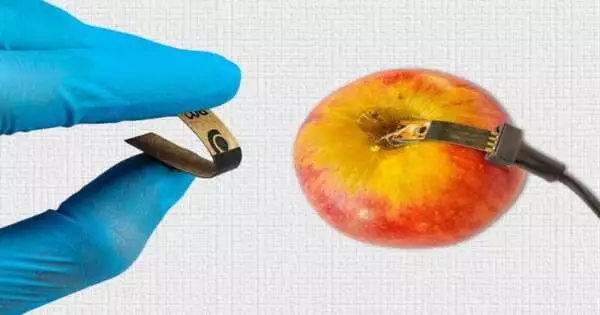Brazilian researchers at the University of Sao Paulo (USP) have created an electrochemical sensor based on kraft paper that, when connected to an electronic device, can detect pesticide traces in produce in real time. For instance, it can identify carbendazim, a fungicide that is still widely used in Brazil despite being outlawed, in an apple or a cabbage.
An article from the journal Food Chemistry details the outcomes.
“Traces of pesticides must first be removed from a food sample using time-consuming chemical processes before any such substances can be identified using conventional methods. There is no longer a need for these intricate procedures thanks to wearable sensors, such as the one we created for continuous pesticide monitoring in agriculture and the food industry. For a store, eatery, or importer, for example, inspection is much simpler, less expensive, and more dependable, according to Osvaldo Novais de Oliveira Junior, the article’s fifth author and a professor at IFSC-USP.
With the exception of the fact that the results of food scanning for pesticides are displayed on a smartphone, the new device is extremely sensitive and resembles the glucometers used by diabetics to measure blood sugar. The sensitivity of the method was comparable to the conventional method in the tests we ran. Additionally, it’s quick and affordable, according to José Luiz Bott Neto, the article’s co-corresponding author and a postdoctoral fellow at IFSC-USP.
“In our experiments, its sensitivity was comparable to that of the conventional approach. It’s also quick and cheap.”
José Luiz Bott Neto, corresponding author of the article,
How it operates
According to Bott Neto, the device essentially consists of a paper substrate modified with carbon ink and subjected to electrochemical treatment in an acid medium to activate carboxyl groups and enable detection.
“We fabricate an electrochemical device by silkscreening carbon-conducting ink onto a strip of kraft paper. It has three carbon electrodes and is submerged in an acidic solution to activate the carboxyl groups. In other words, the carbon electrode’s structure is enhanced by the addition of oxygen atoms. The sensor triggers an electrochemical oxidation reaction that enables the detection of the fungicide when it comes into contact with a sample that has been tainted with carbendazim. He explained that electrical current is used to gauge the amount of carbendazim.
The stability and structure of the paper substrate were assessed by the researchers when designing the device. According to Thiago Serafim Martins, the article’s first author and a postdoctoral fellow at IFSC-USP, “the properties of the paper itself were an important part of our research.”.
Top choice.
In their examination of kraft paper and parchment, the researchers discovered that both kinds of paper are stable enough to act as a substrate for the sensor. Martins added that paper-based electrodes could be used in a variety of applications, but that the kraft paper’s porousness gave the sensor and the carboxyl groups formed during electrochemical activation more sensitivity.
Commercial electrodes can be made of ceramic or plastic. We successfully created electrochemical sensors based on paper, a much more malleable material with potential applications in many fields, such as healthcare, in addition to farms and supermarkets, the scientist said.
More information: Thiago S. Martins et al, Optimized paper-based electrochemical sensors treated in acidic media to detect carbendazim on the skin of apple and cabbage, Food Chemistry (2023). DOI: 10.1016/j.foodchem.2023.135429





